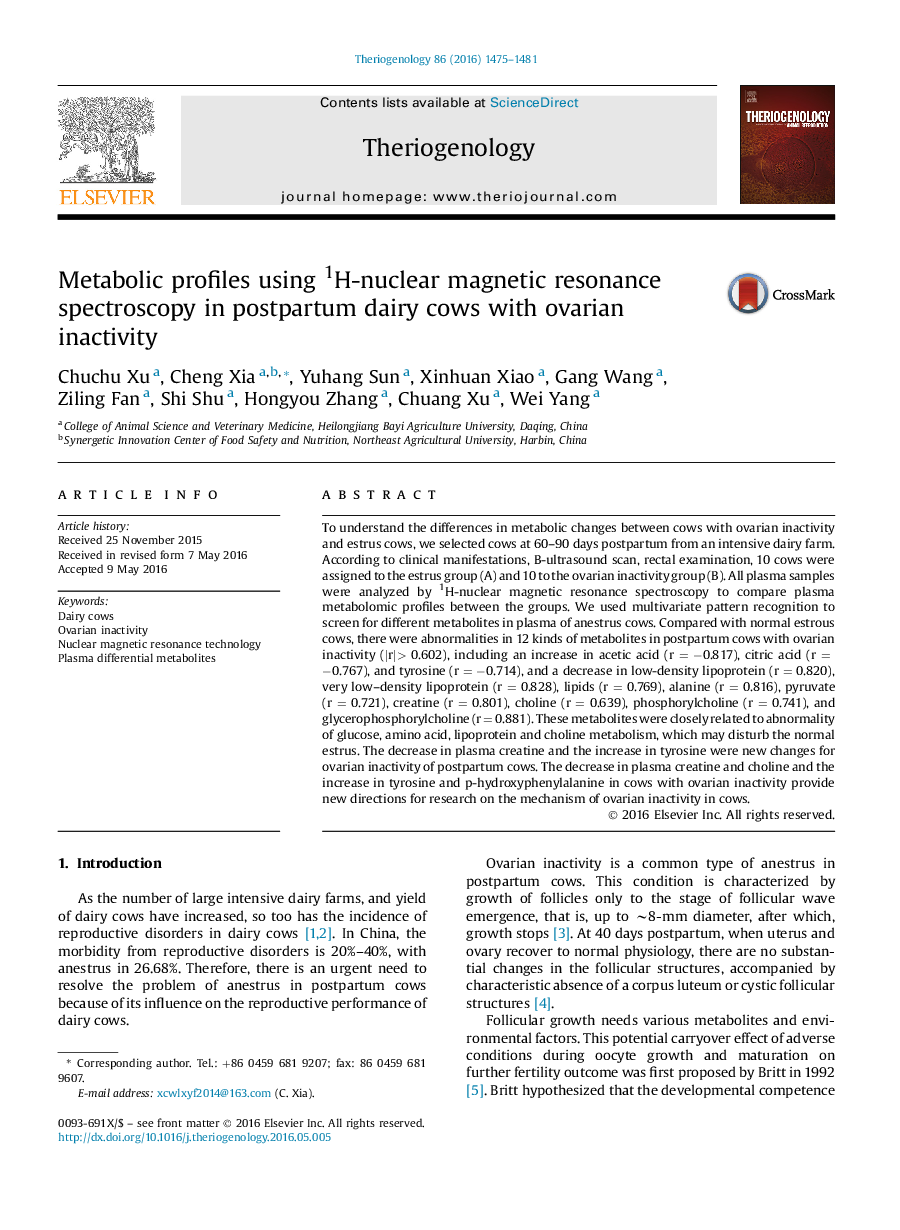| Article ID | Journal | Published Year | Pages | File Type |
|---|---|---|---|---|
| 2094684 | Theriogenology | 2016 | 7 Pages |
To understand the differences in metabolic changes between cows with ovarian inactivity and estrus cows, we selected cows at 60–90 days postpartum from an intensive dairy farm. According to clinical manifestations, B-ultrasound scan, rectal examination, 10 cows were assigned to the estrus group (A) and 10 to the ovarian inactivity group (B). All plasma samples were analyzed by 1H-nuclear magnetic resonance spectroscopy to compare plasma metabolomic profiles between the groups. We used multivariate pattern recognition to screen for different metabolites in plasma of anestrus cows. Compared with normal estrous cows, there were abnormalities in 12 kinds of metabolites in postpartum cows with ovarian inactivity (|r|> 0.602), including an increase in acetic acid (r = −0.817), citric acid (r = −0.767), and tyrosine (r = −0.714), and a decrease in low-density lipoprotein (r = 0.820), very low–density lipoprotein (r = 0.828), lipids (r = 0.769), alanine (r = 0.816), pyruvate (r = 0.721), creatine (r = 0.801), choline (r = 0.639), phosphorylcholine (r = 0.741), and glycerophosphorylcholine (r = 0.881). These metabolites were closely related to abnormality of glucose, amino acid, lipoprotein and choline metabolism, which may disturb the normal estrus. The decrease in plasma creatine and the increase in tyrosine were new changes for ovarian inactivity of postpartum cows. The decrease in plasma creatine and choline and the increase in tyrosine and p-hydroxyphenylalanine in cows with ovarian inactivity provide new directions for research on the mechanism of ovarian inactivity in cows.
